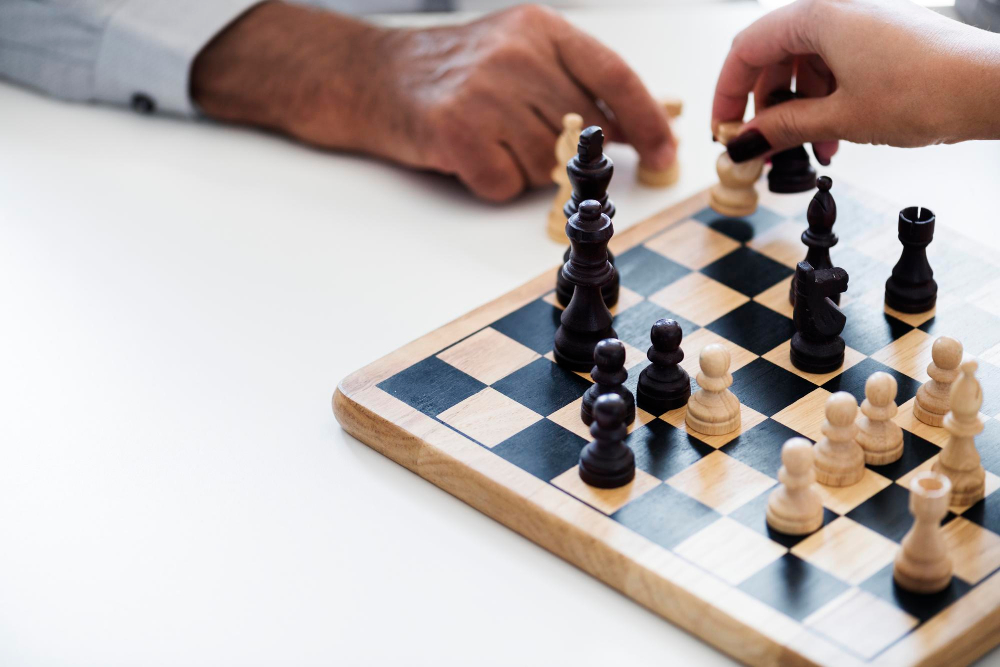Chess is an ancient game of strategy and skill, beloved by millions around the world. Whether you’re a complete beginner or refreshing your knowledge, understanding the names of chess pieces and grasping the basic game rules is your first step toward mastery. Let’s dive into the captivating world of chess, exploring its pieces and fundamental rules that sculpt the game’s vast landscape of possibilities.
Names of Chess Pieces
Chess is played with 16 pieces per player, each with its unique movement patterns. The composition includes one King, one Queen, two Rooks, two Knights, two Bishops, and eight Pawns. Here’s a brief overview:
- King: The most important piece, whose checkmate signals the end of the game.
- Queen: The most powerful piece, combining the abilities of the Rook and Bishop.
- Rooks: Move in straight lines across rows and columns.
- Knights: Move in an L-shape, uniquely able to leap over other pieces.
- Bishops: Move diagonally across the board.
- Pawns: Move forward one square, with options for initial double move and diagonal captures.
Basic Game Rules
To start playing chess, it’s essential to familiarize yourself with its basic rules. Chess is a two-player game, with the objective of checkmating your opponent’s king while safeguarding your own. Here’s how the game is structured:
Setting up the Board
The chessboard consists of 64 squares arranged in an 8×8 grid, alternating in color between light and dark. To set up, place the boards so each player has a white (or lightest color) square at the board’s right corner. Arrange the pieces on the first two rows nearest each player, with Pawns on the second rank and the other pieces placed on the back rank as follows: Rooks in the corners, then Knights, followed by Bishops, and finally the Queen on her matching color and the King on the remaining square.
Understanding Moves and Captures
Each type of piece moves in distinctive ways, and capturing happens when a piece moves to a square occupied by an opponent’s piece, removing the latter from the board. Remember, with the exception of the Knight, pieces cannot leap over others.
Special Moves
There are a few special rules in chess to enhance gameplay:
- Castling:
- A move involving the King and one of the Rooks to fortify the King’s defense.
- En Passant:
- A pawn capturing technique under specific conditions immediately following an opponent’s pawn’s double step move.
- Promotion:
- When a Pawn reaches the opposite side of the board, it can be promoted to another piece, usually the Queen.
Winning the Game
A game of chess can end in checkmate, stalemate, draw by agreement, or if a player resigns. Checkmate occurs when a King is in a position to be captured (‘in check’) and cannot escape capture. Understanding strategies to protect your King while threatening your opponent’s is key to victory.
Chess is not just a game; it’s a journey through history, art, and intelligence. By knowing the names of chess pieces and basic rules, you’re well on your way to unlocking the endless pleasure and challenge that chess presents. Happy playing!

